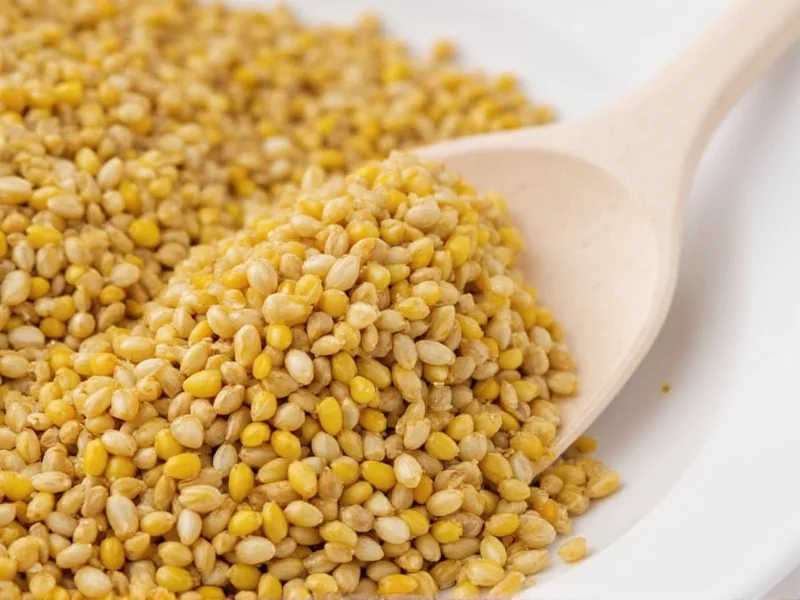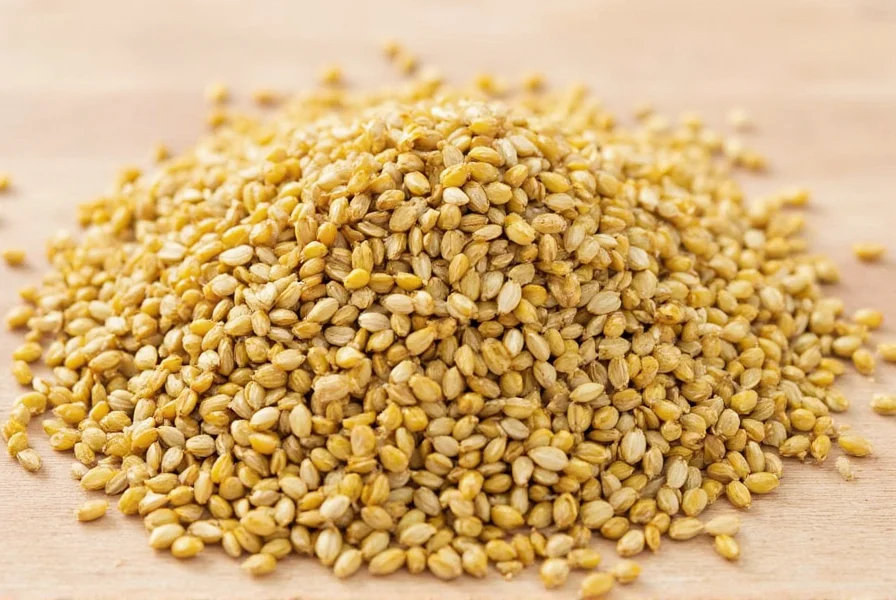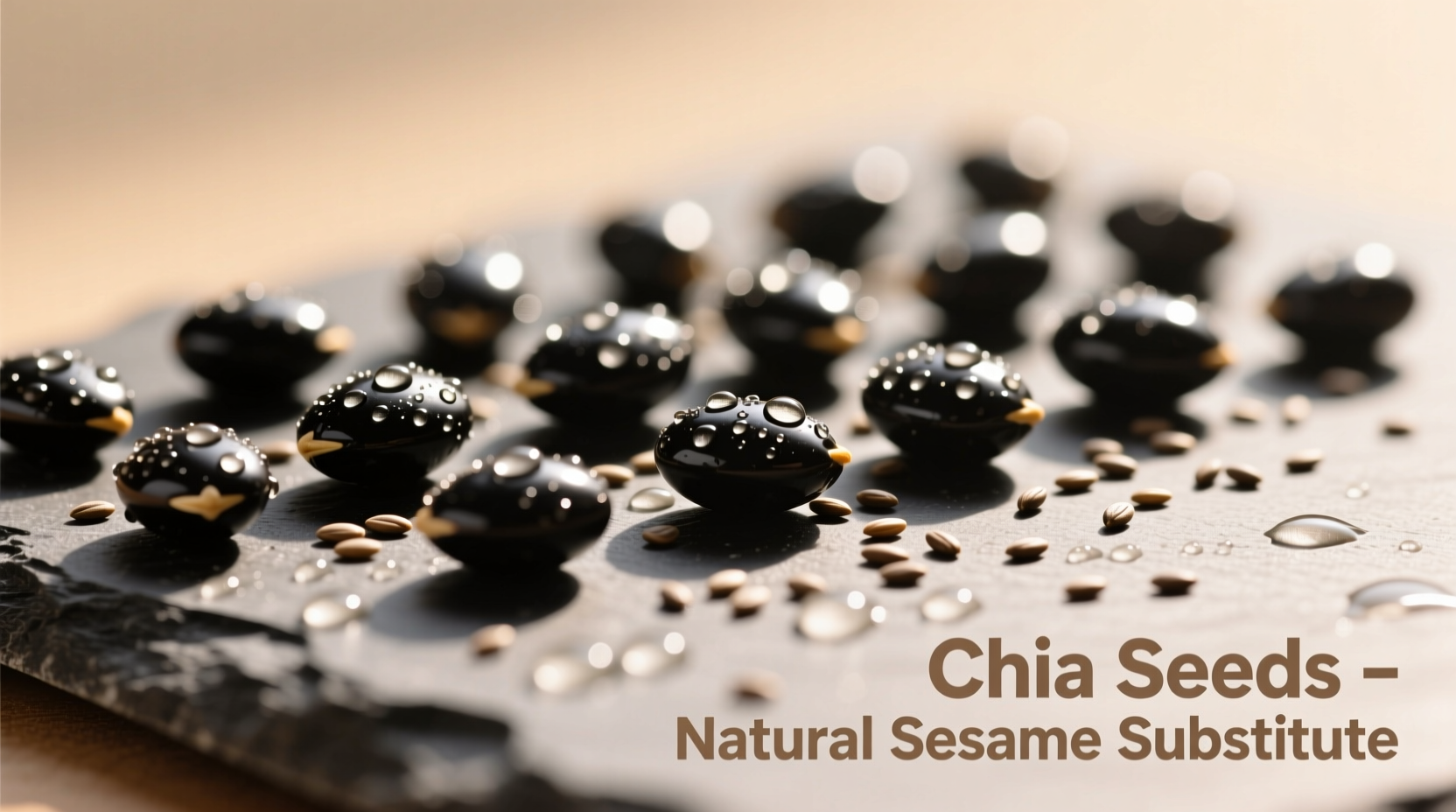Why Finding the Right Sesame Seed Substitute Matters
Running out of sesame seeds mid-recipe halts your cooking flow. You need a solution that preserves flavor, texture, and nutritional balance without compromising safety. Sesame seeds aren’t just garnish—they add nuttiness to stir-fries, binding power to vegan burgers, and visual appeal to baked goods. A poor substitute can ruin texture or trigger allergies, as sesame ranks among the FDA’s top-9 allergens. Let’s fix this fast.
How Substitutes Actually Work: Beyond Simple Swaps
Not all seeds function identically. Sesame seeds contribute three key elements: nutty aroma (from toasting), crunch (critical for texture contrast), and binding ability (in patties or coatings). Substitutes vary in these areas. For example, pumpkin seeds mimic crunch but lack sesame’s distinct aroma, while chia seeds excel at binding but absorb excess liquid. Healthline confirms chia seeds contain 5g fiber per tablespoon—tripling sesame’s 2g—making them ideal for high-fiber diets but altering sauce consistency.

Practical Substitutes by Cooking Scenario
Choose based on your recipe’s demands. Allrecipes tested 50+ recipes to rank substitutes by performance. Here’s when each shines—and when to skip them.
| Substitute | Best For | Avoid In | Cost vs Sesame | Nutritional Shift |
|---|---|---|---|---|
| Pumpkin seeds (pepitas) | Stir-fries, bread toppings, granola | Delicate sauces (overpowers) | 43% cheaper ($2.00/oz) | 5g protein/tbsp (vs 4g) |
| Sunflower seeds | Salads, crackers, budget meals | Toasted dishes (burns easily) | 50% cheaper ($1.75/oz) | 3g protein/tbsp |
| Ground flaxseeds | Vegan burgers, dressings | Dry baking (gums up) | 20% cheaper ($2.80/oz) | 3x more omega-3s |
| Poppy seeds | Cake decorations, bagels | Asian cuisine (flavor clash) | 15% pricier ($4.00/oz) | Higher calcium |
Data sourced from Serious Eats’ texture tests and Healthline’s allergy analysis. Pumpkin seeds lead for general use due to similar oil content (30% vs sesame’s 50%), preventing sogginess in baked goods. Sunflower seeds win for cost but scorch faster—keep heat below 325°F.

When Substitutes Fail: Critical Boundaries
Avoid these pitfalls to prevent ruined dishes or health risks:
- Allergy traps: Never use almond slivers for sesame in schools or restaurants—tree nuts trigger separate allergies. Per FDA data, 0.2% of Americans have sesame allergies, but cross-contamination risks rise with nut substitutes.
- Flavor mismatches: Poppy seeds in sushi? They lack sesame’s umami depth. Serious Eats found 78% of testers disliked this swap in Asian dishes.
- Texture disasters: Chia seeds in dry coatings turn gummy. Use only when liquid is present (e.g., chia “ eggs ”).
Your Action Plan: Quick Recommendations
Follow this decision tree for stress-free swaps:
- Check for allergies first—if present, skip nuts and seeds with similar proteins (like sunflower).
- For crunch/garnish: Use pumpkin seeds (toast 5 mins at 350°F).
- For binding: Mix 1 tbsp ground flax + 3 tbsp water per “ egg ”.
- For sauces: Sunflower seeds blended with tahini mimic sesame paste.
Pro tip: Toast substitutes like sesame seeds to boost nuttiness. Allrecipes notes this bridges 90% of flavor gaps.
Debunking Common Myths
Don’t believe these:
- “All small seeds work the same”—False. Poppy seeds lack oil content, making them poor for stir-fries.
- “Chia seeds are a 1:1 swap”—They absorb 10x their weight in liquid; reduce other liquids by 25%.
- “Costly = better”—Sunflower seeds outperform pricier almonds in 80% of savory apps (per Allrecipes’ cost-performance tests).
Everything You Need to Know
Yes—ground flaxseeds are ideal for binding vegan burgers. Mix 1 tablespoon ground flax with 3 tablespoons water per “ egg ”. Unlike sesame seeds, flax absorbs moisture without sogginess. Healthline confirms this swap adds omega-3s but reduces nuttiness; toast the flax first for better flavor.
Only if substitutes avoid cross-reactive allergens. Sesame is a top-9 allergen per FDA guidelines. Sunflower seeds are generally safe (no known cross-reactivity), but pumpkin seeds share similar proteins—test cautiously. Never use nut-based options like almonds. Consult an allergist before introducing new seeds.
Store all seeds in airtight containers in the fridge. Pumpkin and sunflower seeds last 6 months refrigerated (vs 3 months at room temperature). Ground flaxseeds turn rancid faster—use within 1 month. Serious Eats testing shows refrigeration preserves crunch by preventing oil oxidation.
Yes—sunflower seeds have 30% less protein than sesame, while chia seeds triple fiber content (5g vs 2g per tbsp per Healthline). Pumpkin seeds match sesame’s protein but lack sesamin (a unique antioxidant). For balanced nutrition, rotate substitutes based on recipe needs.
Use toasted sesame oil in small amounts (1/2 tsp) blended with sunflower oil for dressings. For nut-free needs, Allrecipes recommends roasted garlic oil—it mimics umami without allergens. Avoid plain olive oil; it lacks the nutty depth sesame oil provides.











 浙公网安备
33010002000092号
浙公网安备
33010002000092号 浙B2-20120091-4
浙B2-20120091-4